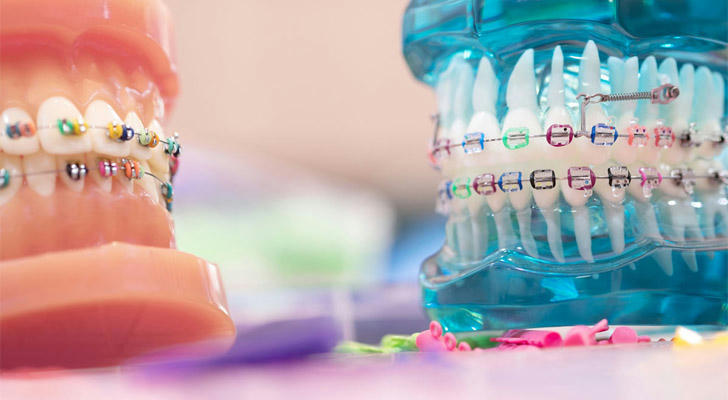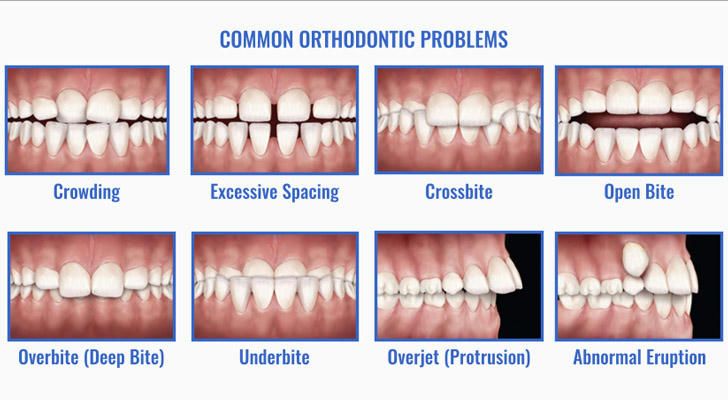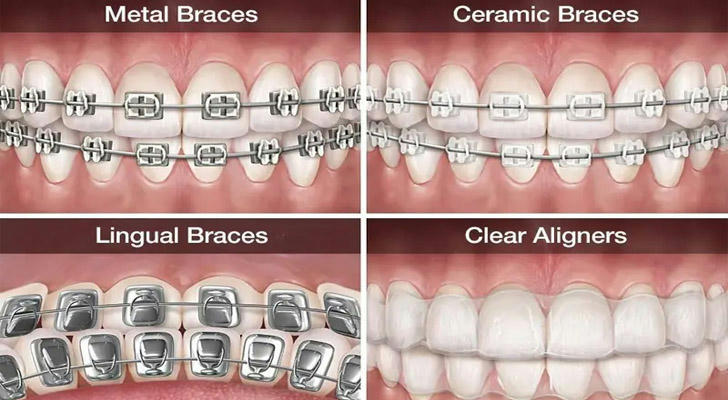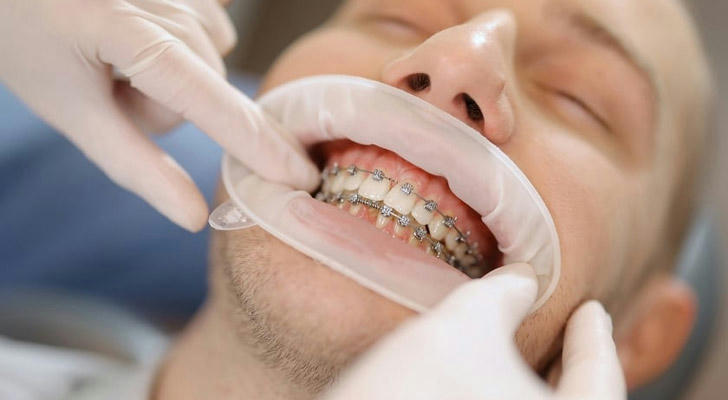How To Choose The Best Orthodontic Treatment For You

Orthodontics not only concerns aesthetics but also has a profound impact on oral health and overall quality of life. By correcting misaligned teeth and abnormal bite, orthodontic treatment can improve chewing function, reduce abnormal pressure on the teeth and jawbone, and prevent tooth wear and gum disease. Additionally, properly aligned teeth are easier to clean, lowering the risk of cavities and gum inflammation. Orthodontic treatment not only boosts personal confidence but also promotes oral and overall health in many ways.

I.The Importance of Choosing the Right Orthodontic Treatment for Yourself
1.Personalized Treatment Plan
When undergoing orthodontic treatment, each individual's oral condition and needs are different. Therefore, selecting an orthodontic plan that suits oneself is crucial. Through professional oral examinations and assessments, dentists can formulate a personalized treatment plan based on individual dental conditions. A personalized treatment plan can better meet everyone's correction needs and improve treatment outcomes.
2.Reduce Pain and Discomfort
If an unsuitable correction method is chosen, it may increase the difficulty and pain of the correction. An appropriate correction plan can alleviate discomfort during the correction process, improve patient comfort, and make the entire treatment process smoother and more pleasant.
3.Improve Treatment Effectiveness and Success Rate
An appropriate treatment plan can better adjust the position and occlusion of the teeth to achieve the ideal correction effect. Adjustments are made according to the individual's oral condition and needs to ensure that the correction effect is more lasting and stable.
4.Enhance Oral Health Level
Improve oral hygiene, reduce gum inflammation caused by crowded teeth, and correct dental arrangement and occlusion can improve chewing and speaking functions.

II.Determining the Problems with Your Own Teeth
1.Crowded Teeth
Refers to the teeth in the mouth being too dense and unable to be completely aligned neatly. Crowded teeth can lead to difficulties in oral hygiene, making it easy to cause dental plaque and caries problems. It can also affect the occlusion function, making chewing uneven, which may cause temporomandibular joint pain.
2.Sparse dentition
This refers to the condition where the teeth in the mouth are spaced too far apart, creating excessive gaps between them. Dental spacing can lead to improper occlusion, affecting chewing efficiency, and it can also impact aesthetics. Additionally, spaced teeth are more prone to food retention and the development of cavities betweenteeth.
3.Jaw deformity
Refers to the abnormal size, position and shape of the maxillary, mandibular or both, resulting in abnormal occlusion between teeth. Jaw deformity may cause problems such as malocclusion, facial asymmetry, and incoordination of opening and closing, affecting oral function and facial beauty.
4.Maxillofacial growth disharmony
Maxillofacial growth disharmony refers to the mismatch in growth rate and direction of the maxillary, mandibular or both, leading to tooth misalignment and occlusion problems. Maxillofacial growth disharmony may cause symptoms such as tooth protrusion, deep overbite, and uncoordinated open and close bite, affecting oral health and appearance.
5.Malocclusion
Malocclusion refers to abnormal contact and alignment between the upper and lower teeth, resulting in an irregular bite relationship. It can cause uneven bite, uneven tooth wear, and temporomandibular joint pain, affecting oral function and dental health.
III.Different treatment methods for orthodontics and suitable populations
1.Traditional Orthodontic Treatment
Traditional orthodontic treatment typically uses braces or metal brackets to correct dental issues. This method effectively addresses various problems, including crowdedteeth,malocclusion, and jaw deformities. It is suitable for patients of almost all ages, particularly those who do not have strict time constraints for treatment.
(1)Advantages
• Reliable Results: Effective for a wide range of complex dental alignment and occlusion issues.
• Wide Applicability: Suitable for nearly all ages and varying severities of dental problems.
• Cost-Effective: Generally less expensive compared to other orthodontic treatments.
• Proven Technology: Well-established with a high success rate and reliability.
(2)Disadvantages
• Aesthetic Impact: Metal brackets are noticeable, which may affect personal appearance, especially when talking to others.
• Lower Comfort: Brackets and wires can cause friction or discomfort in the mouth, with initial pain being common.
• Cleaning Difficulty: Cleaning brackets and wires can be challenging, leading to food debris retention and an increased risk of cavities and gum issues.
• Frequent Adjustments: Requires regular visits to the orthodontist for adjustments, increasing appointment frequency and time costs.
2.Invisible orthodontic treatment
Invisible braces, such as invisible braces and Invisalign, can correct teeth without affecting appearance.This treatment method is more concealed and comfortable than traditional orthodontic treatment, and is suitable for adult patients who have high requirements for appearance.Invisible braces are suitable for treating mild to moderate crowding and malocclusion, but may not be effective for some complex dental problems.
(1)Advantages
• Concealed and comfortable: Invisible braces are almost transparent, not easy to detect, and do not affect appearance; because invisible braces are customized plastic materials, they are smoother than traditional metal brackets, reducing irritation and discomfort in the mouth.
• Removable: They can be removed when eating and brushing teeth, making it easier to clean the mouth and braces.
• Easy to clean: Without metal brackets and wires, teeth cleaning becomes simpler, reducing the risk of tooth decay and gum problems.
• Reduce oral problems: Invisible braces do not cause damage to oral soft tissues like traditional braces, reducing the occurrence of problems such as oral ulcers.
(2)Disadvantages
• Limited scope of application: Invisible braces may not be as effective as traditional braces for some complex bite problems and severe tooth misalignment. Treatment options are sometimes limited.
• High price: The price of invisible braces treatment is relatively high.
• Patient cooperation is required: Patients need to strictly follow the doctor's instructions, change braces regularly, and maintain good oral hygiene habits.
• Unstable treatment cycle: Although invisible braces can provide quick results, in some cases if the patient does not wear them as required, the treatment time may be prolonged.
IV.Case Study
Xiao Ming, a 25-year-old young man, was unhappy with his teeth due to noticeable crowding and misalignment in his front teeth, which caused him significant distress. He decided to pursue orthodontic treatment but felt overwhelmed by the numerous options and information available.
Xiao Ming first consulted his general dentist, who recommended traditional braces. However, Xiao Ming was concerned about the impact on his appearance and quality of life. Thus, he decided to explore other treatment options.
After consulting several dentists, Xiao Ming learned about Invisalign treatment, which uses clear aligners to gradually adjust the position of the teeth in a more discreet and comfortable manner. He was satisfied with this method, as it met his needs and expectations.
Ultimately, Xiao Ming chose Invisalign and began the treatment process under his dentist’s guidance. After a few months of treatment, his teeth gradually became more aligned and aesthetically pleasing. By finding the right orthodontic treatment for himself, Xiao Ming successfully resolved his dental issues.

V.Conclusion
To reduce common errors in orthodontic treatment, both patients and doctors need to work together. First, patients should choose the appropriate treatment method, considering their personal circumstances and the doctor’s recommendations to ensure the effectiveness of the treatment plan. Second, patients must strictly adhere to the treatment plan and attend regular check-ups to ensure smooth progress. Maintaining good oral hygiene habits, such as brushing and flossing, is also crucial. Additionally, patients should avoid bad habits like nail-biting and chewing hard objects, as these can affect tooth growth and the effectiveness of orthodontics. Finally, regular dental check-ups are essential to identify and address potential issues promptly, ensuring both dental health and the success of orthodontic treatment. By following these recommendations and making the necessary efforts, patients can minimize common orthodontic errors and achieve the desired treatment results, resulting in healthy, beautiful teeth.
